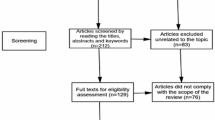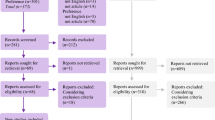Abstract
This paper presents Slovenia’s results as part of an international study investigating student preferences of class readings regarding format (print or electronic) and factors impacting these preferences and behaviours. Common beliefs are that digital media is about to prevail over print materials, but several studies have found the contrary: most students still prefer print format over digital for their academic readings. They feel their comprehension and retention is better in print, but they like the convenience and accessibility of electronic. This issue is relevant to both libraries and teachers and instructors. The main research question of this study is: What are students’ format preferences when engaging with their academic readings? Secondary questions ask about the factors that impact their behaviors. An online survey of 25 questions was distributed in spring 2015 to students in different disciplines and levels at three public universities. Results were obtained using descriptive statistical analysis.
Similar content being viewed by others
References
Wästlund, E., Reinikka, H., Norlander, T., Archer, T.: Effects of VDT and paper presentation on consumption and production of information: psychological and physiological factors. Comput. Hum. Behav. 21(2), 377–394 (2005)
Mangen, A., Bente, R.W., Kolbjørn, B.: Reading linear texts on paper versus computer screen: effects on reading comprehension. Int. J. Educ. Res. 58, 61–68 (2013)
Chen, G., Cheng, W., Chang, T., Zheng, X., Huang, R.: A comparison of reading comprehension across aaper, computer screens, and tablets: does tablet familiarity matter? J. Comput. Educ. 1(2–3), 213–225 (2014)
Ackerman, R., Goldsmith, M.: Metacognitive regulation of text learning: on screen versus on paper. J. Exper. Psych. Applied 17(1), 18–32 (2011)
Ji, S.W., Michaels, S., Waterman, D.: Print vs. electronic readings in college courses: cost-efficiency and perceived learning. Internet High. Educ. 21, 17–24 (2014)
Mizrachi, D.: Undergraduates’ academic information and library behaviors: preliminary results. Ref. Serv. Rev. 38(4), 571–580 (2010)
Mizrachi, D.: Online or print: which do students prefer? In: Kurbanoğlu, S., Špiranec, S., Grassian, E., Mizrachi, D., Catts, R. (eds.) ECIL 2014. CCIS, vol. 492, pp. 733–742. Springer, Heidelberg (2014)
Mizrachi, D.: Undergraduates’ academic reading format preferences and behaviors. J. Acad. Librarianship 41(3), 301–311 (2015). http://dx.doi.org/10.1016/j.acalib.2015.03.009
Thayer, D., Lee, C.P., Hwang, L.H., Sales, H., Sen,P., Dalal, N.: The Imposition and Superimposition of Digital Reading Technology: The Academic Potential of E-readers. In: Proceedings of the SIGCHI Conference on Human Factors in Computing Systems, pp. 2917–2926. Association for Computing Machinery, Vancouver (2011). http://dx.doi.org/10.1145/1978942.1979375
Noyes, J.M., Garland, K.J.: VDT versus paper-based text: reply to Mayes, Sims and Koonce. Int. J. Ind. Ergon. 31(6), 411–423 (2003)
Zambarbieri, D., Carniglia, E.: Eye movement analysis of reading from computer displays, ereaders and printed books. Ophthalmic Physiol. Opt. 32(5), 390–396 (2012)
Strouse, R.: The changing face of content users and the impact on information providers. Online 28(5), 27–31 (2004)
Eshet-Alkalai, Y., Geri, N.: Does the medium affect the message? the influence of text representation format on critical thinking. Hum. Syst. Manage. 26(4), 269–279 (2007)
Li, C., Poe, F., Potter, M., Quigley, B., Wilson, J.: UC Libraries Academic e-Book Usage Survey (2011). http://www.cdlib.org/services/uxdesign/docs/2011/academic_ebook_usage_survey.pdf
Dilevko, J., Gottlieb, L.: Print sources in an electronic age: a vital part of the research process for undergraduate students. J. Acad. Librarianship 28(6), 381–392 (2002)
Case, D.O.: Principle of least effort. In: Fisher, K.E., Erdelez, S., McKechnie, L. (eds.) Theories of Information Behavior, pp. 289–297. Information Today Inc, Medford, NJ (2005)
Liew, C.L., Foo, S., Chennupati, K.R.: a study of graduate student end-users; use and perception of electronic journals. Online Inf. Rev. 24(4), 302–315 (2000)
Sathe, N.A., Grady, J.L., Giuse, N.B.: Print versus electronic journals: a preliminary investigation into the effect of journal format on research processes. J. Med. Libr. Assoc. 90(2), 235–243 (2002)
Corlett-Rivera, K., Hackman, T.: E-Book usage and attitudes in the humanities, social sciences, and education. Portal Libr. Acad. 14(2), 255–286 (2014)
Foasberg, N.: Student reading practices in print and electronic media. Coll. Res. Libr. 75(5), 705–723 (2014)
Liu, Z.: Print vs. electronic resources: a study of user perceptions, preferences, and use. Inf. Process. Manage. 42(2), 583–592 (2006)
Tenopir, C.: Use and Users of Electronic Library Resources: An Overview and Analysis of Recent Research Studies (2003). http://www.clir.org/pubs/reports/pub120/pub120.pdf
Mizrachi, D., Bates, M.J.: Undergraduates’ personal academic information management and the consideration of time and task-urgency. J. Am. Soc. Inform. Sci. Technol. 64(8), 1590–1607 (2013)
Quayyum, M.A.: Capturing the online academic reading process. Inf. Process. Manage. 44(2), 581–595 (2008). http://dx.doi.org/10.1016/j.ipm.2007.05.005
Author information
Authors and Affiliations
Corresponding author
Editor information
Editors and Affiliations
Rights and permissions
Copyright information
© 2015 Springer International Publishing Switzerland
About this paper
Cite this paper
Zabukovec, V., Vilar, P. (2015). Paper or Electronic: Preferences of Slovenian Students. In: Kurbanoglu, S., Boustany, J., Špiranec, S., Grassian, E., Mizrachi, D., Roy, L. (eds) Information Literacy: Moving Toward Sustainability. ECIL 2015. Communications in Computer and Information Science, vol 552. Springer, Cham. https://doi.org/10.1007/978-3-319-28197-1_43
Download citation
DOI: https://doi.org/10.1007/978-3-319-28197-1_43
Published:
Publisher Name: Springer, Cham
Print ISBN: 978-3-319-28196-4
Online ISBN: 978-3-319-28197-1
eBook Packages: Computer ScienceComputer Science (R0)




